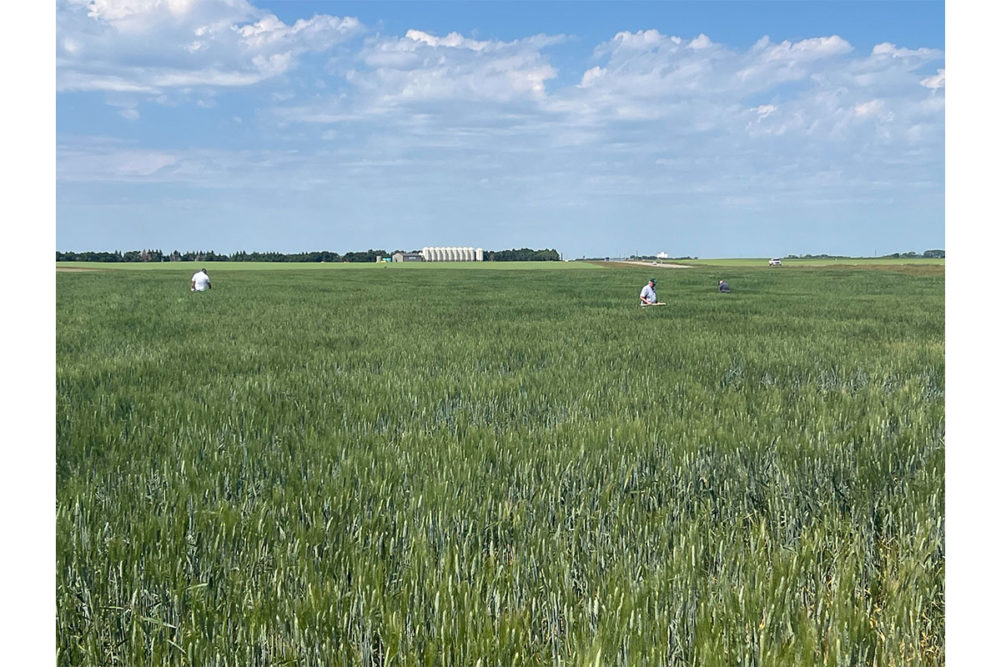DEVILS LAKE, ND — As the wheat tour moved west, fields were more in need of moisture, grasshopper pressure prevalence increased and tour scouts’ estimated yields declined.
Such were the findings from wheat scouts taking part in the Day 2 meeting during the Wheat Quality Council’s Hard Spring Wheat and Durum Tour. Several dozen wheat scouts from across the wheat value chain departed Fargo, ND, early July 26 following one of seven color-coded routes exploring the condition of spring wheat and durum fields in the central and northwestern areas of the nation’s top wheat production state. Scouts in groups of three to four measured between 8 and 18 fields, visually appraising stands, measuring height and examining wheat for signs of viral or bacterial disease, heat or drought stress and pest or weed pressure. The teams also made a series of measurements that were put into a formula in order to estimate the crop.
At the nightly reporting and information-sharing session, representatives from 14 cars submitted Day 2 yield estimates for calculation by tour statistician Rita Ott of General Mills. The results indicated scouts visited 138 hard red spring wheat fields on Day 2 and generated an average yield estimate of 45.7 bus per acre (bpa). That compared with 47.7 bpa as the estimate on Day 2 of the 2022 tour. The Day 2 estimate brought the cumulative tour yield estimate to 46.9 bpa based on 268 field stops, which compared with 48.3 bpa based on 224 field stops after the first two days of the 2022 tour.
After a representative from each vehicle presented a brief summary of the day’s experience, several area farmers weighed in on the hard red spring wheat crop, including Jeff Topp, who farms with his sons near Grace City, ND.
“We’ve got ground that picked up 10 inches of rain in the month of June,” Mr. Topp said. “Of the showers that have come across the state, only one would I call a statewide general rain. It came on the 25th of June. Where we’re at, we had 112 inches of snow. We didn’t get into the field until the 6th of May, which is really late for us, and then we got 2 inches of rain, which pushed us back until about May 10 as a start date. Our wheat looks great, we’re trying to fill the fourth kernel per spikelet and an eyeball yield today would be a 65 average if the heat dissipates. We badly need a rain. If the heat doesn’t get us and if we turn cooler, we could have some 85-bpa wheat. There are some good wheat pockets out there.”
Scouts also took measurements in 15 durum fields on Day 2, resulting in an average yield estimate of 40.5 bpa. which compared with 39.9 bpa based on 29 field stops in 2022. The cumulative two-day durum estimate was 43.8 bpa based on 20 field stops, which compared to 40.2 bpa based on 34 field stops over the three days of the 2022 tour.
The tour continues early July 27 with scouts expected to make a few field stops enroute to North Dakota Mill in Grand Forks for a tour and a few stops on the southbound route back to the tours concluding meeting at the Northern Crops Institute on the campus of North Dakota State University.





